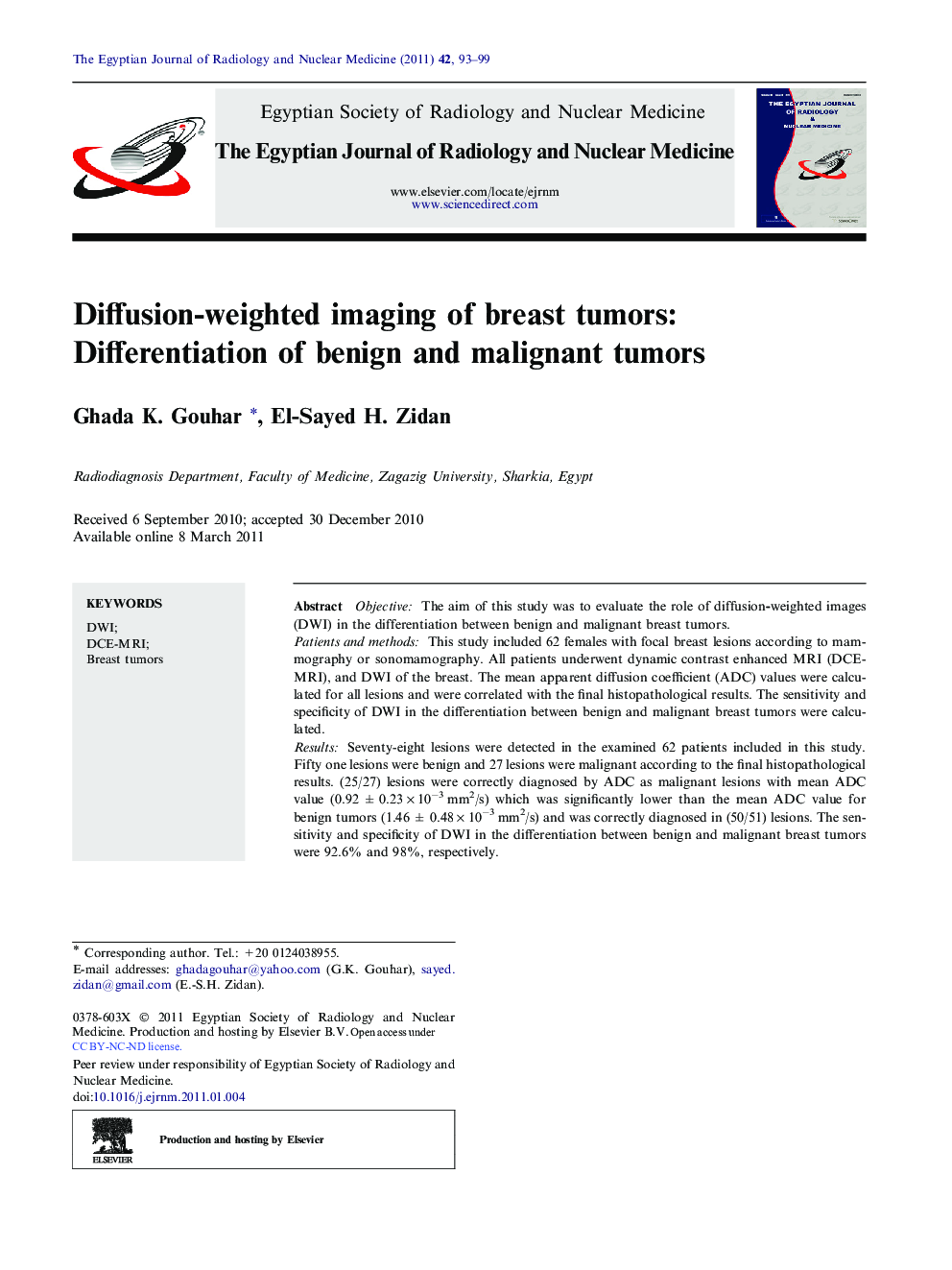| Article ID | Journal | Published Year | Pages | File Type |
|---|---|---|---|---|
| 4224749 | The Egyptian Journal of Radiology and Nuclear Medicine | 2011 | 7 Pages |
ObjectiveThe aim of this study was to evaluate the role of diffusion-weighted images (DWI) in the differentiation between benign and malignant breast tumors.Patients and methodsThis study included 62 females with focal breast lesions according to mammography or sonomamography. All patients underwent dynamic contrast enhanced MRI (DCE-MRI), and DWI of the breast. The mean apparent diffusion coefficient (ADC) values were calculated for all lesions and were correlated with the final histopathological results. The sensitivity and specificity of DWI in the differentiation between benign and malignant breast tumors were calculated.ResultsSeventy-eight lesions were detected in the examined 62 patients included in this study. Fifty one lesions were benign and 27 lesions were malignant according to the final histopathological results. (25/27) lesions were correctly diagnosed by ADC as malignant lesions with mean ADC value (0.92 ± 0.23 × 10−3 mm2/s) which was significantly lower than the mean ADC value for benign tumors (1.46 ± 0.48 × 10−3 mm2/s) and was correctly diagnosed in (50/51) lesions. The sensitivity and specificity of DWI in the differentiation between benign and malignant breast tumors were 92.6% and 98%, respectively.ConclusionDWI offers a useful method for differentiation of benign and malignant breast lesions with high sensitivity and specificity. Being a short unenhanced scan DWI can be safely added to the standard breast MRI protocol.
